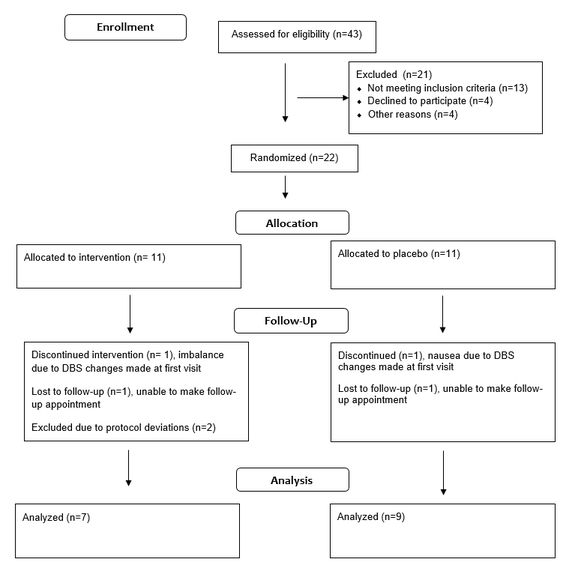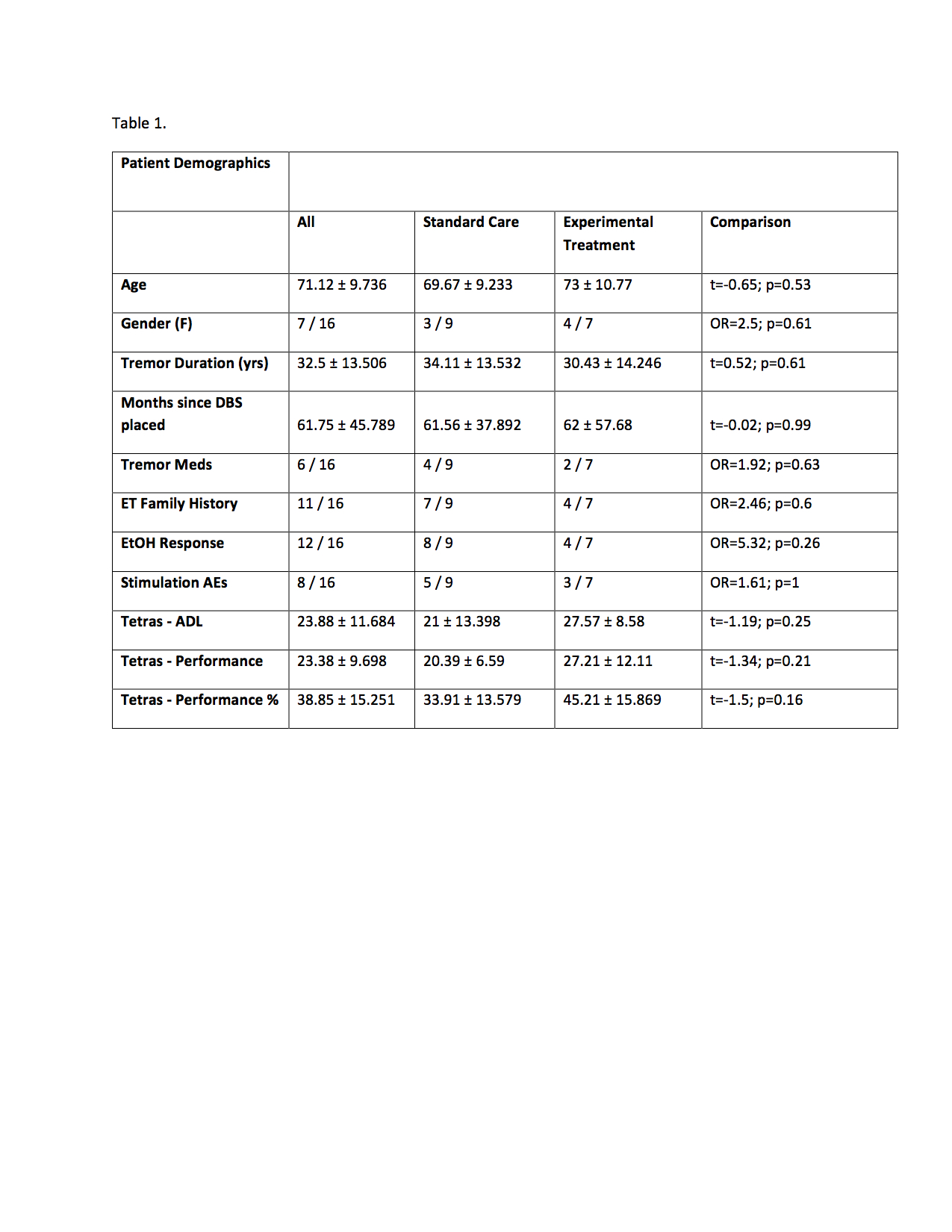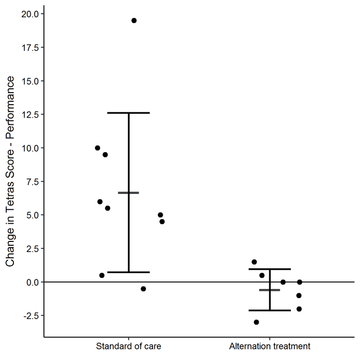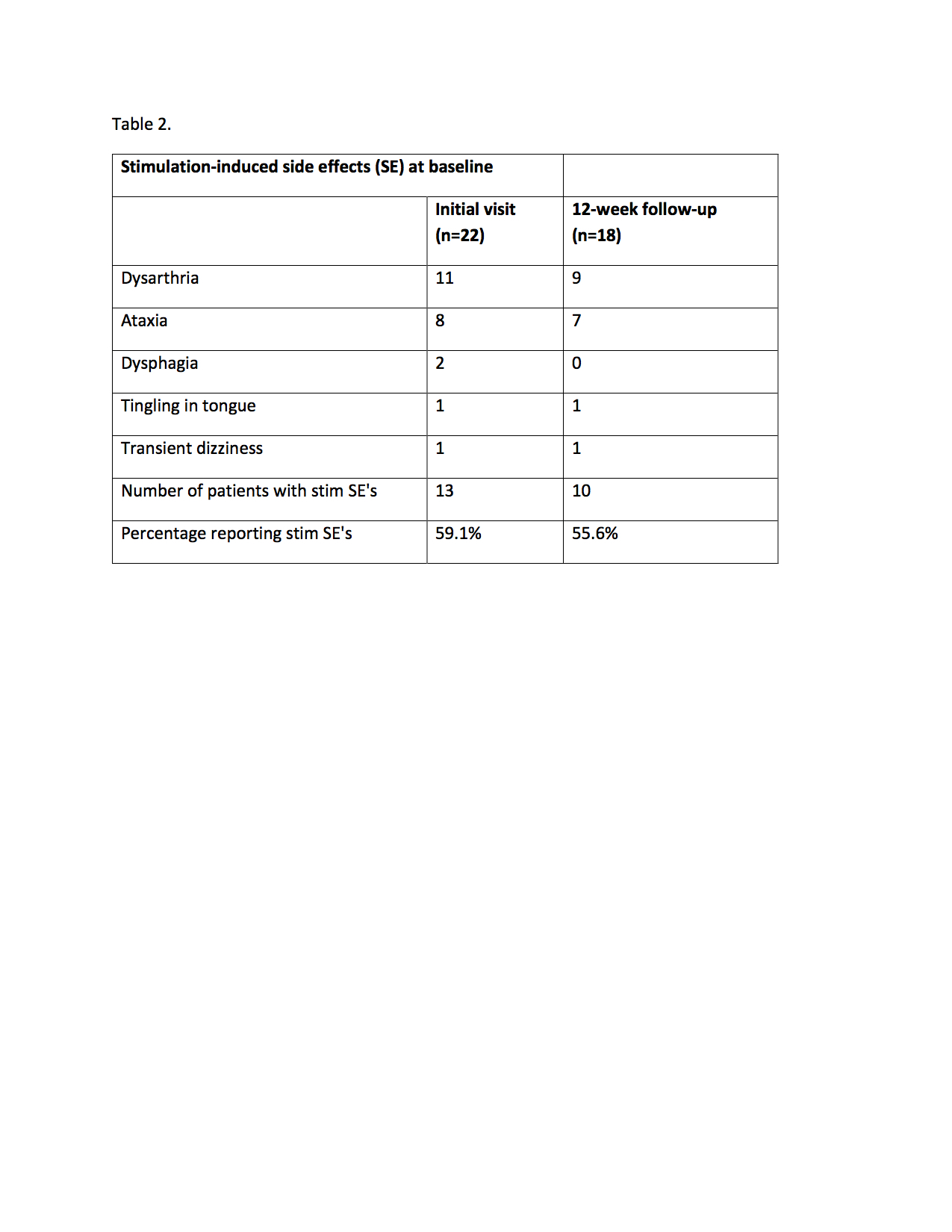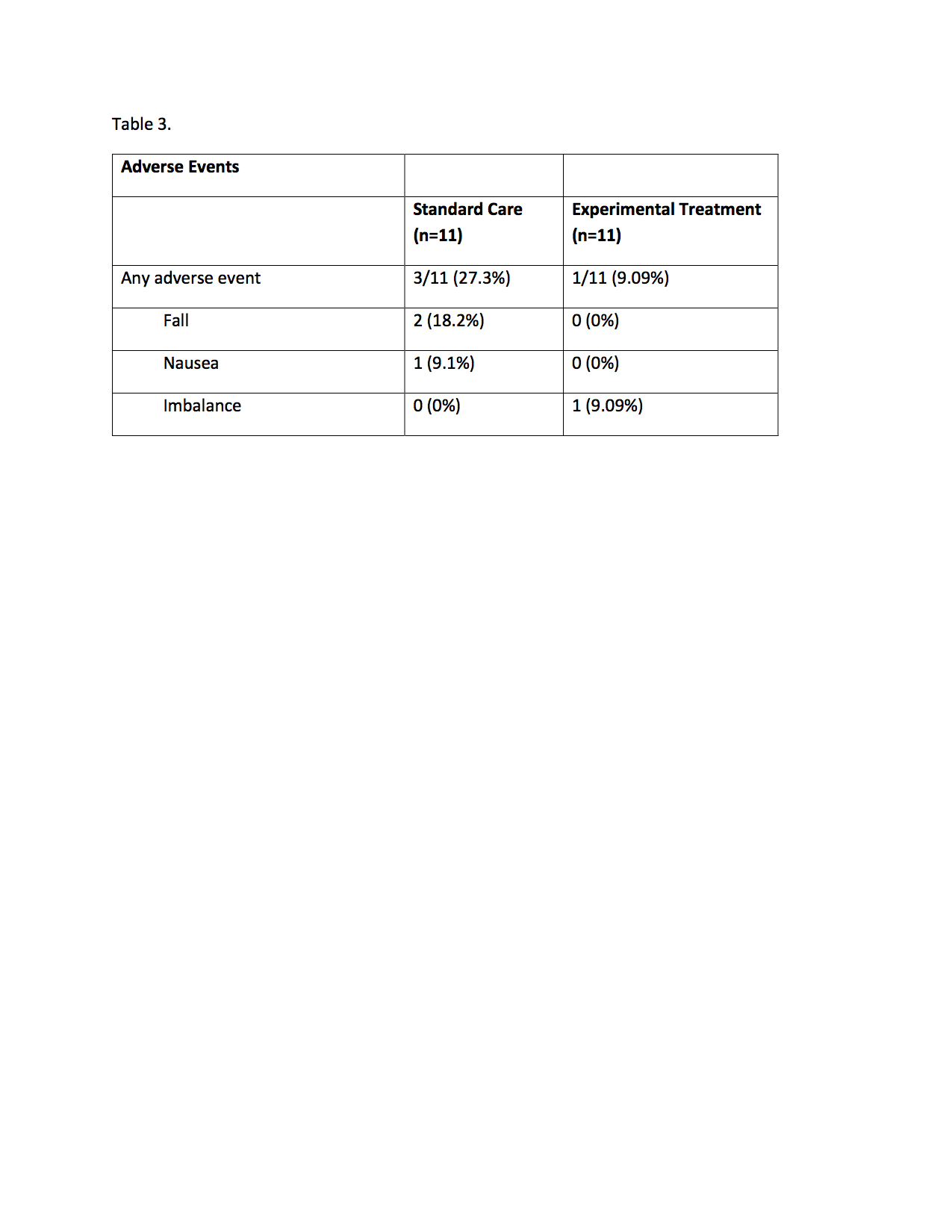Session Information
Date: Sunday, October 7, 2018
Session Title: Tremor
Session Time: 1:45pm-3:15pm
Location: Hall 3FG
Objective: We propose a novel approach to the treatment paradigm for deep brain stimulation (DBS) programming in the ventral intermediate nucleus (VIM) for patients with essential tremor (ET), which currently uses constant parameter settings. This new approach entails giving a patient two different groups for tremor control and alternating between the two groups on a scheduled basis. The hypothesis of the study is that by regularly alternating settings, there will be a reduction in habituation to stimulation and thus tremor benefit will be maintained as compared to the current treatment paradigm.
Background: ET is a common neurological condition which can cause debilitating tremor. VIM DBS has been a revolutionary treatment for patients with ET by significantly reducing tremor severity. Unfortunately, some patients develop waning of tremor control over time which is thought to be due, at least in part, to development of habituation to chronic brain stimulation. There are no standardized methods of addressing habituation to DBS.
Methods: This was a randomized, placebo controlled trial for patients with VIM DBS for ET. Patients were randomized to either experimental treatment arm of alternating stimulation patterns on a weekly basis or standard care arm of continuous stimulation settings. Two different, but equally effective stimulation parameters were determined for each subject (group A/group B). The groups differed by at least two of the following parameters: electrode configuration, voltage, milliamps, frequency or pulse width. Subjects in the experimental treatment arm received a group A and group B and standard care subjects received only a group A, which was programmed in duplicate. Patients alternated between the two programmed groups on a weekly basis. Primary outcome was change in the performance subscale of The Essential Tremor Rating Assessment Scale (TETRAS) which was performed at baseline and 12 weeks.
Results: 22 patients were enrolled in the trial, 16 were analyzed. The experimental treatment arm displayed sustained tremor control compared to standard care, as measured by the change in TETRAS performance subscale (-0.6 versus 6.7 point change, respectively) with a 7.3 difference between the arms (p= 0.006). Percentage of total TETRAS performance subscales also showed a significant difference between the groups; standard care arm had a mean increase of 10±9% and experimental treatment arm had decrease of 1±3% in scores (p-value= 0.005).
Conclusions: Alternating stimulation on a weekly basis for ET patients with VIM DBS may be a way to address habituation that can occur in this population. This study suggests that exposure to different stimulation groups may maintain better tremor control compared to current treatment of constant stimulation parameters. This technique is easily employed with the current technology and is well tolerated by patients. Future studies, with longer-term outcomes, are needed before a wider application of this method can be routinely recommended.
To cite this abstract in AMA style:
M. Seier, A. Hiller, J. Quinn, C. Murchison, M. Brodsky, S. Anderson. Alternating thalamic deep brain stimulation for Essential Tremor: A trial to reduce habituation [abstract]. Mov Disord. 2018; 33 (suppl 2). https://www.mdsabstracts.org/abstract/alternating-thalamic-deep-brain-stimulation-for-essential-tremor-a-trial-to-reduce-habituation/. Accessed December 19, 2025.« Back to 2018 International Congress
MDS Abstracts - https://www.mdsabstracts.org/abstract/alternating-thalamic-deep-brain-stimulation-for-essential-tremor-a-trial-to-reduce-habituation/

